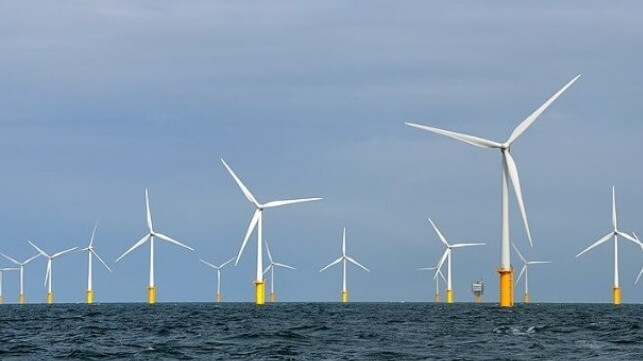Report: U.S. Offshore Wind Farms Could Interfere With Marine Radar

The Biden administration is pursuing ambitious renewable energy goals, including a target of 30 gigawatts of offshore wind energy capacity by 2030. This would be enough to power 10 million homes and can reduce carbon emissions by 78 million metric tons.
To achieve such a scale, the U.S Outer Continental Shelf will see a proliferation of wind farms. In less than one year, offshore wind energy planning has expanded from the U.S Atlantic Coast, where most wind farms are sited, to areas in the Gulf of Mexico and the Pacific Coast, notably the northern and Central Coasts of California. Cumulatively, these projects will cover 1.6 million acres.
But a new study by the National Academy of Sciences finds that expansive areas of wind farms along a coastline may also interfere with marine radar systems.
“Wind turbines in the marine environment affect marine vessel radar in a situation-dependent manner, with the most common impact being a substantial increase in strong, reflected energy clustering the operator’s display, leading to complications in navigation decision making,” notes the report.
This could increase risk for both bigger and smaller vessels to navigate shipping channels clustered by offshore wind farms. With hub heights of most wind turbines exceeding 100 meters, with towers made of steel, these large installations can have significant electromagnetic reflectivity. As a result, turbines installed within the line of sight of a radar system can cause clutter and interference, in some cases reducing radar performance.
If rotating, the blades can have large and numerous Doppler returns due to their motion relative to the radar system. Doppler effect occurs where sound waves shorten as a moving object approaches an observer. In this case, the spinning blades could shorten or distort radar signals sent from passing ships. It can produce what’s called a “blade flash” on a ship’s radar screen, creating false images that resembles boats and can ultimately confuse a human radar operator onboard a vessel.
Although maritime bodies are aware that offshore wind turbines can cast radar shadows, the impacts of large-scale wind power development as envisioned along the U.S coastline have not yet been studied in depth.
The report also notes concerns by the US Coast Guard that the radar interference may hamper search- and- rescue missions for vessels that get in trouble around wind farms.
At the operational level, the report offers a number of solutions. These include more reliance on non-radar navigational tools while near a wind farm, like additional watch standers, AIS and ECDIS.

that matters most
Get the latest maritime news delivered to your inbox daily.
The researchers also offered several technical ways to reduce turbine-related interference, like improved radar signal processing; the installation of radar reflectors on small vessels to minimize lost contacts; and the development of solid-state radar – known best as the underlying technology for the U.S. Navy’s SPY-7 Aegis system - for commercial marine use. “Solid-state radar offers greater potential in overcoming [turbine] interference than magnetron-based radar. The . . . stakeholder community could incentivize innovation in [radar] products by manufacturers to promote radar designs with increased immunity to [turbine] interference,” they suggested.
